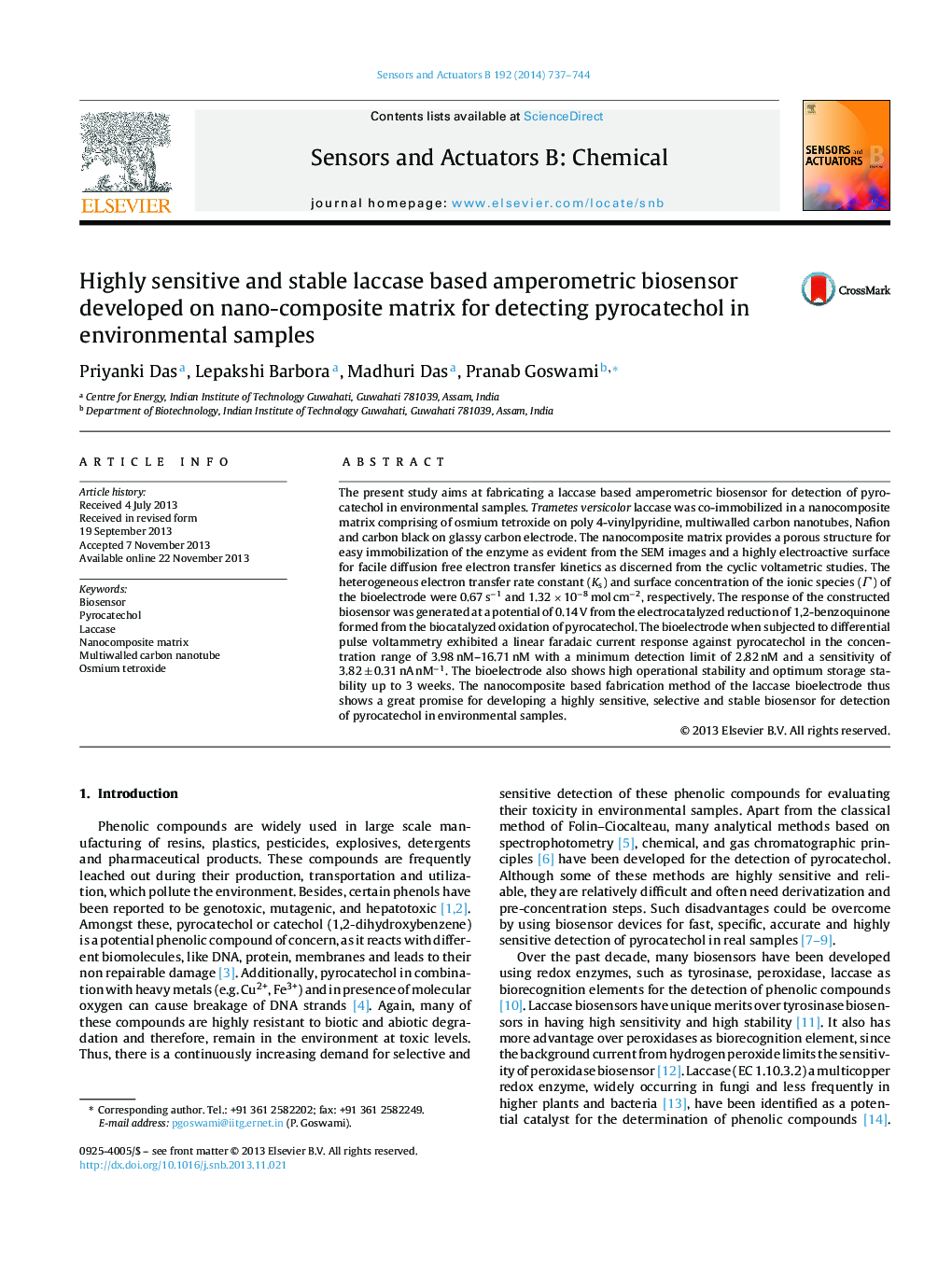| Article ID | Journal | Published Year | Pages | File Type |
|---|---|---|---|---|
| 7148255 | Sensors and Actuators B: Chemical | 2014 | 8 Pages |
Abstract
The present study aims at fabricating a laccase based amperometric biosensor for detection of pyrocatechol in environmental samples. Trametes versicolor laccase was co-immobilized in a nanocomposite matrix comprising of osmium tetroxide on poly 4-vinylpyridine, multiwalled carbon nanotubes, Nafion and carbon black on glassy carbon electrode. The nanocomposite matrix provides a porous structure for easy immobilization of the enzyme as evident from the SEM images and a highly electroactive surface for facile diffusion free electron transfer kinetics as discerned from the cyclic voltametric studies. The heterogeneous electron transfer rate constant (Ks) and surface concentration of the ionic species (Î) of the bioelectrode were 0.67 sâ1 and 1.32 Ã 10â8 mol cmâ2, respectively. The response of the constructed biosensor was generated at a potential of 0.14 V from the electrocatalyzed reduction of 1,2-benzoquinone formed from the biocatalyzed oxidation of pyrocatechol. The bioelectrode when subjected to differential pulse voltammetry exhibited a linear faradaic current response against pyrocatechol in the concentration range of 3.98 nM-16.71 nM with a minimum detection limit of 2.82 nM and a sensitivity of 3.82 ± 0.31 nA nMâ1. The bioelectrode also shows high operational stability and optimum storage stability up to 3 weeks. The nanocomposite based fabrication method of the laccase bioelectrode thus shows a great promise for developing a highly sensitive, selective and stable biosensor for detection of pyrocatechol in environmental samples.
Related Topics
Physical Sciences and Engineering
Chemistry
Analytical Chemistry
Authors
Priyanki Das, Lepakshi Barbora, Madhuri Das, Pranab Goswami,
